
Senior pupils from Queen Elizabeth’s Girls’ School joined A-level Art students at Queen’s Road for special life-drawing sessions during QE’s Arts Week.
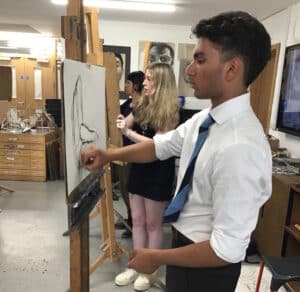 Together with the girls’ participation in filming a promotional video and in a Sketch-off event held as part of QE’s Design Festival earlier in the Summer Term, the life-drawing sessions mark an expansion of the work of the QE Together partnership, which had previously focused on community activities.
Together with the girls’ participation in filming a promotional video and in a Sketch-off event held as part of QE’s Design Festival earlier in the Summer Term, the life-drawing sessions mark an expansion of the work of the QE Together partnership, which had previously focused on community activities.
Head of Art Craig Wheatley explained the sessions’ importance: “Life-drawing is rooted in a traditional and historical practice; students can develop their observational drawing skills and gain a better understanding of anatomy and human form.
“Our Arts Week seemed like a perfect opportunity to re-introduce this extra-curricular activity; inviting the girls was another chance for pupils from both schools to share a creative experience.”
Mr Wheatley paid tribute to the specialist teaching experience of his QE Art department colleagues, Jeanne Nicodemus and Alison Lefteri, who led the sessions. He added that feedback from the participating students was very positive.
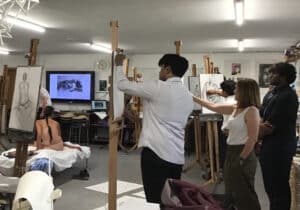 Led by pupils from the two schools, QE Together continued its community activities, with musicians coming together for another concert for care home residents.
Led by pupils from the two schools, QE Together continued its community activities, with musicians coming together for another concert for care home residents.
Pupils from QE and QEGS also teamed up to appear in the promotional video for School Diversity Week for LGBT+ charity, Just Like Us.
Filmed by Deloitte and shown at a launch hosted by JP Morgan Chase, the film included the senior boys and girls holding up coloured card, with letters superimposed in post-production to spell out key messages for the week.
Not all the pupils who participated are part of the LGBTQ+ community; they are instead allies, supporting the promotion of inclusion in all schools across the country.
 QE Together is one of the newest of QE’s partnerships. The School also has firmly established academic partnerships with North London Collegiate School and The Henrietta Barnett School.
QE Together is one of the newest of QE’s partnerships. The School also has firmly established academic partnerships with North London Collegiate School and The Henrietta Barnett School.
During the Summer Term, Year 10 headed to NLCS for an inter-disciplinary symposium on Change and Renewal.
With HBS, in addition to Year 10 and 12 events, 144 selected Year 8 pupils from both schools vigorously debated contentious topics, including This House believes it was right to arrest the protesters at the King’s coronation.

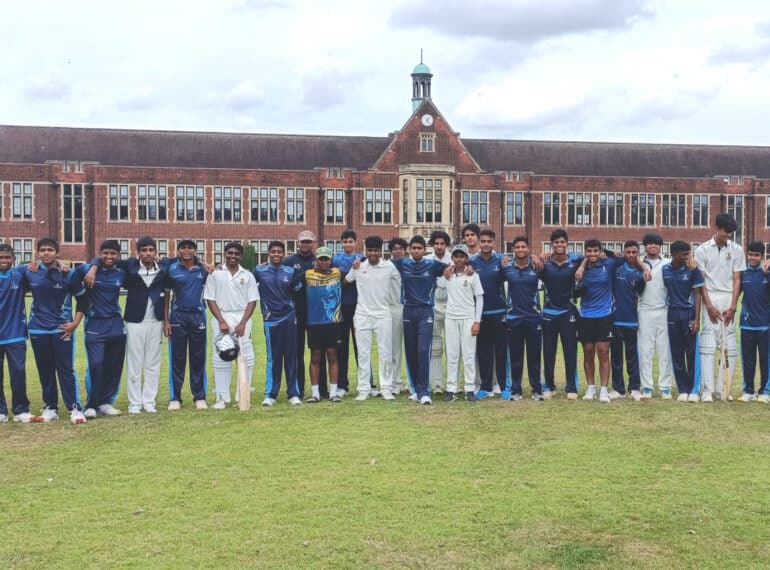
 Also en route to the ICCA championship were the American players from the Major League Cricket Academy based on the US East Coast, who took on the Second XI.
Also en route to the ICCA championship were the American players from the Major League Cricket Academy based on the US East Coast, who took on the Second XI.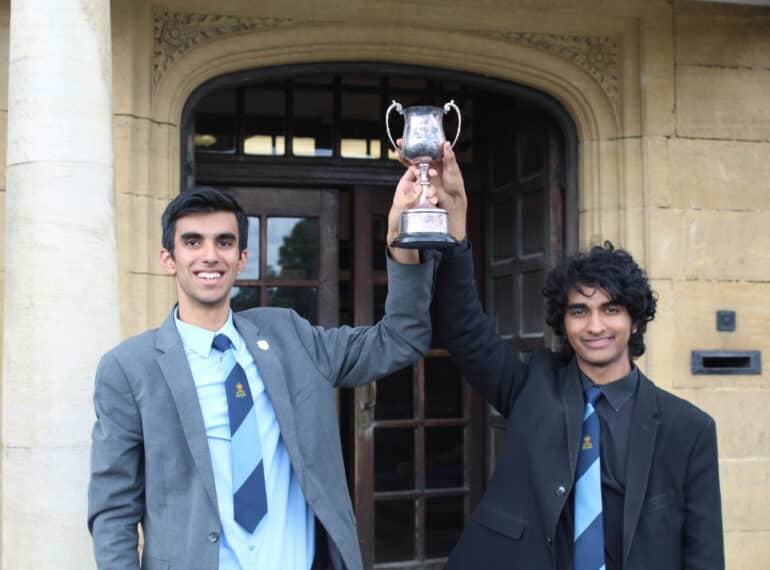
 The eagerly awaited result was announced to great excitement in the end-of-year assembly. This academic year’s competition was an emphatic reversal of last year: Stapylton not only enjoyed a certain margin of victory over runners-up Leicester, they also left the 2021–2022 winners, Harrisons’, languishing in the lower reaches of the points table.
The eagerly awaited result was announced to great excitement in the end-of-year assembly. This academic year’s competition was an emphatic reversal of last year: Stapylton not only enjoyed a certain margin of victory over runners-up Leicester, they also left the 2021–2022 winners, Harrisons’, languishing in the lower reaches of the points table.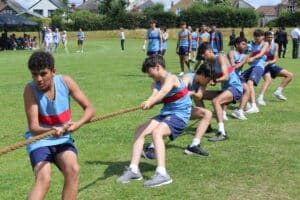 The House system is run by the boys themselves, with each of the six Houses having a House Captain, Deputy House Captain and Charities Officer. Each form within every year group also has a House representative.
The House system is run by the boys themselves, with each of the six Houses having a House Captain, Deputy House Captain and Charities Officer. Each form within every year group also has a House representative.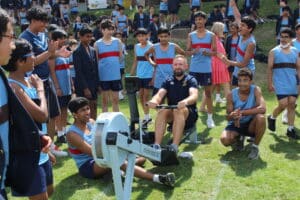 Points are also awarded based on the totals of merits, good notes and commendations earned across the year groups.
Points are also awarded based on the totals of merits, good notes and commendations earned across the year groups.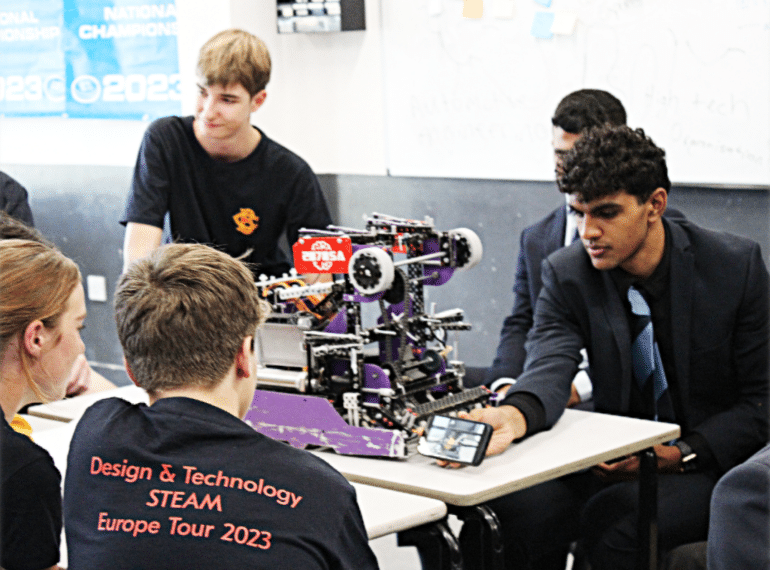
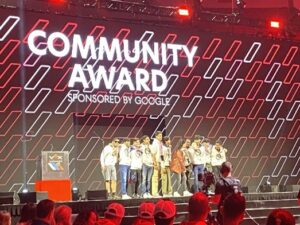 The six IQ (Year 8 and 9) and three VRC (Year 10) teams picked up a string of trophies in Dallas, while also taking time to sample the sights of the city.
The six IQ (Year 8 and 9) and three VRC (Year 10) teams picked up a string of trophies in Dallas, while also taking time to sample the sights of the city.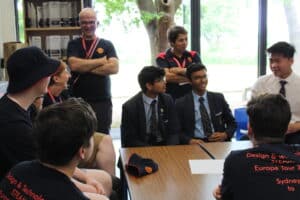 The 60-strong group of 15–17 year-old Australians called in during their trip to London and Paris. Their school, Barker College, is a large, high-achieving independent school on the North Shore of Sydney.
The 60-strong group of 15–17 year-old Australians called in during their trip to London and Paris. Their school, Barker College, is a large, high-achieving independent school on the North Shore of Sydney.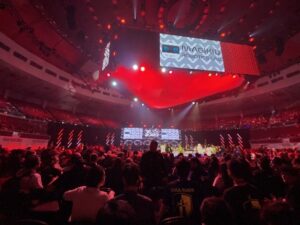 At the senior level, the 19 VRC competitors collectively came away with six awards, including an Inspire Award and the Promote Video Online Challenge Award. Two of the three teams – Nova and Shattersquad – battled through tough early competition and successfully made it through to their divisional knockout stages.
At the senior level, the 19 VRC competitors collectively came away with six awards, including an Inspire Award and the Promote Video Online Challenge Award. Two of the three teams – Nova and Shattersquad – battled through tough early competition and successfully made it through to their divisional knockout stages.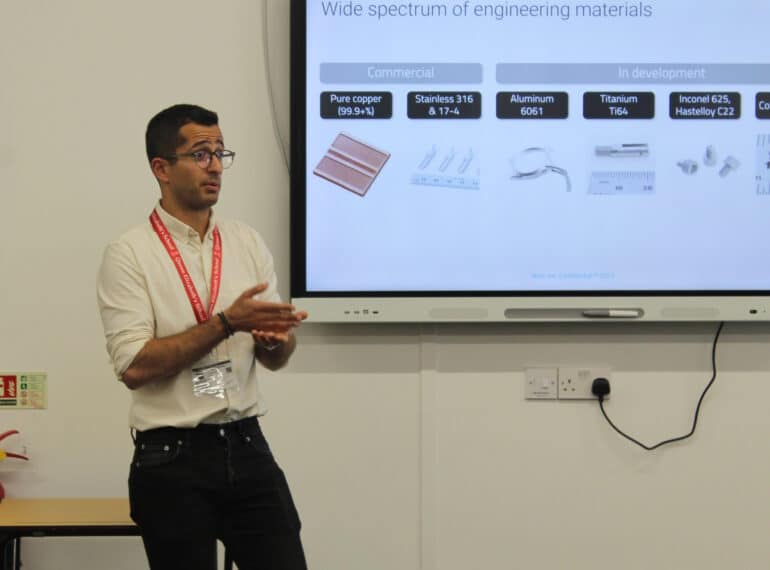
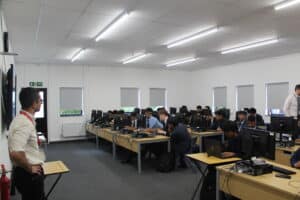 After working for global software firm Autodesk, based in San Francisco, Arian (OE 1998–2003) raised venture capital and successfully spun out its additive manufacturing team to form Holo, while also transitioning its technology from the 3D printing of polymers to metals. Six-and-a-half years later, Holo is at the forefront of innovation, using its proprietary digital platform to enable the manufacturing at scale of high-performance parts across a range of materials, including metals, ceramics and composites. Holo is supported by top-tier Silicon Valley investors and strategic partners.
After working for global software firm Autodesk, based in San Francisco, Arian (OE 1998–2003) raised venture capital and successfully spun out its additive manufacturing team to form Holo, while also transitioning its technology from the 3D printing of polymers to metals. Six-and-a-half years later, Holo is at the forefront of innovation, using its proprietary digital platform to enable the manufacturing at scale of high-performance parts across a range of materials, including metals, ceramics and composites. Holo is supported by top-tier Silicon Valley investors and strategic partners.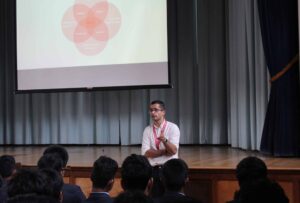 Head of Technology Michael Noonan said: “Arian provided Year 12 with a workshop which firstly covered his professional journey to date, from his early days post PhD working on founding his own company (The Invention Works) through to his position as Senior Principal Engineer at Autodesk. Most of the workshop, however, focussed on his current company, Holo. He explained that he and the other co-founders could see the enormous potential to create a viable business in this area and so pursued it as an opportunity.”
Head of Technology Michael Noonan said: “Arian provided Year 12 with a workshop which firstly covered his professional journey to date, from his early days post PhD working on founding his own company (The Invention Works) through to his position as Senior Principal Engineer at Autodesk. Most of the workshop, however, focussed on his current company, Holo. He explained that he and the other co-founders could see the enormous potential to create a viable business in this area and so pursued it as an opportunity.” The instrument should have six degrees of freedom
The instrument should have six degrees of freedom In the lunchtime talk to Year 10, Arian took a more personal look at his story, beginning with his time at QE, when he was in Stapylton House and was a musician and prefect.
In the lunchtime talk to Year 10, Arian took a more personal look at his story, beginning with his time at QE, when he was in Stapylton House and was a musician and prefect.